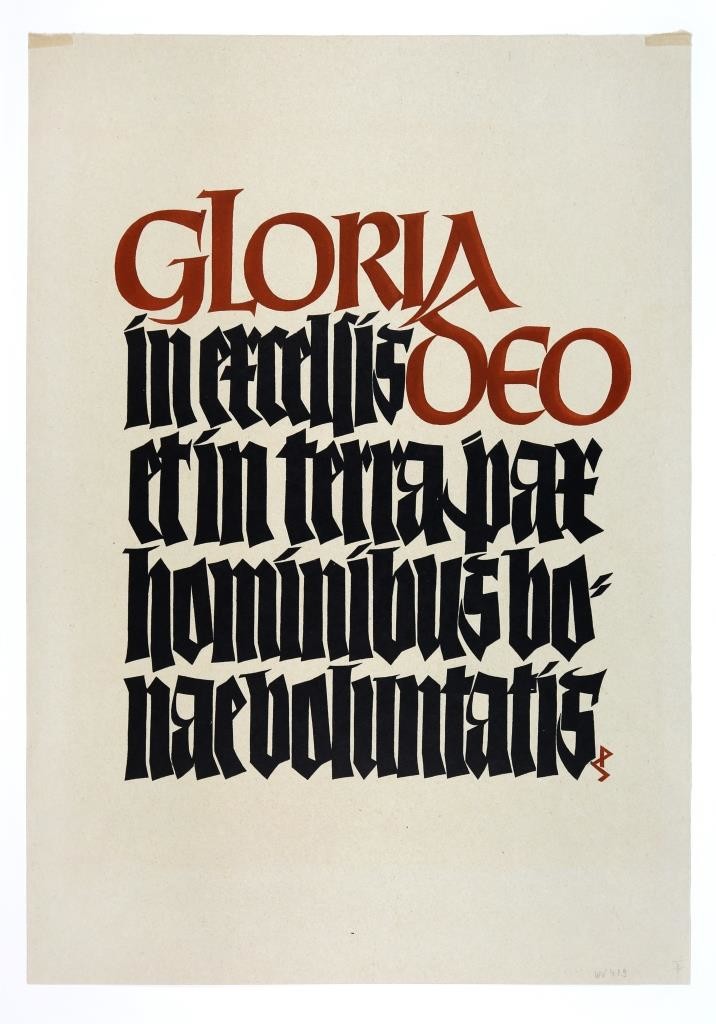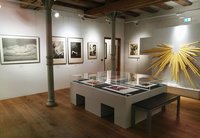Schriftblatt/Farbholzschnitt in Rot und Schwarz von Paul Sinkwitz (1899-1981) aus dem Jahr 1947.
Das Blatt beinhaltet den Hymnus: "GLORIA | in excelsis deo | et in terra pax | hominibus bo= | nae voluntatis". Die Worte "Gloria" und "deo" sind dabei in rot hervorgehoben.
Monogrammiert in Platte unten rechts in Rot.
Bemerkung auf Blattrand unten rechts: "WV 429 F".
Werkverzeichnisnummer: 429
en

